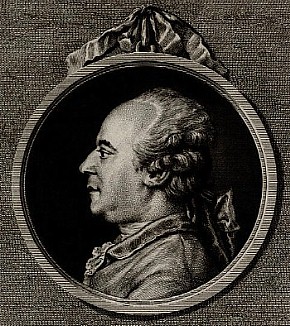Pierre Adrien Paris
architect; b. 1747; d. August 1, 1819.
He was a student at the École royale d' Architecture and studied in Rome as pensionnaire du roi. In 1778 he was appointed dessinateur du cabinet du roi, and in 1780 was admitted to the Académic d' Architecture. In 1787 he was appointed architect of the cathedral of Orleans, and finished the towers of that church in 1790. In 1787 he was commissioned to install the Assembly of Notables in the palace of Versailles. He designed the Hotel de Ville at Neufchâtel, Pas-de-Calais, France. In 1806 he was appointed director of the French Academy at Rome. During his administration he bought the antiques of the Villa Borghese for the Musee du Louvre.
1870

Jean-Baptiste-Louis-George Seroux d'Agincourt
archaeologist, historian; b. April 5, 1730 at Beauvais; d. September 24, 1814.
He was a descendant of the counts of Namur. He entered the French cavalry while a young man, but soon resigned in order to devote himself to his family. Louis XV appointed him collector of the taxes. A disciple of Count de Caylus, the archaeologist, in 1777 he visited England, Belgium, Holland, and a part of Germany; in 1778 he went to Italy, where he devoted himself particularly to the study of the Catacombs of Rome. He formed the plan of imitating for Christian art the work which Winkelmann had done for ancient art, and of studying Christian art from its antiquity up to the Renaissance. This task, in which Louis XVI was also interested, was far from being finished at the time of his death. During the Revolution, d'Agincourt's property had been confiscated; however, during the Empire, the sale of his work brought the distinguished archaeologist once more into comfortable circumstances. D'Agincourt lacked Winkelmann's critical acumen. The reproductions published in his "Histoire de l'art" are imperfect and at times even altered. He took the paintings from the walls of the Catacombs and in this way often caused their destruction. His work is entitled: "Histoire de l'art par les monuments, depuis sa décadence au IVme siècle jusqu' à son renouvellement au XVIme" (Paris, 1823).
1870
3124z
3703b
| |
| |
|